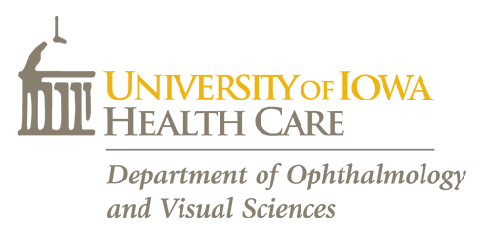The first step in understanding any genetic eye disorder is a complete genetic eye examination. This examination has some unique steps and features that a typical eye examination may not include. First, a complete family history, called a pedigree, is taken. Questions about eye conditions, but also about other systemic conditions that may be associated, are asked. If an individual does not know their extended family well, or is adopted and does not have birth family history, that does not mean we cannot do a complete genetic workup. The family history does sometimes point us quickly in the right direction, but we often work without this information.
For pre-verbal children or developmentally challenged adults, we have techniques to measure vision that do not require the patient to answer us. Some of these techniques include fixation preference testing with prisms and Teller Acuity Cards using preferential looking.
We do a motility and strabismus evaluation, which determines how the eyes are working together. We evaluate for the presence of nystagmus, an involuntary motion of the eyes. Nystagmus is usually a sign, not a diagnosis in itself, and there is a specific, detailed work up if nystagmus is present.
Intraocular pressure is measured; the iCare device is very easy for most children to cooperate with and allows us to evaluate intraocular pressure in most patients. Pupils are examined. A special infrared video or pupillography may be performed.
A slit lamp exam allows a microscopic examination of the anterior segment (front of the eye). Sometimes photographs are taken at the slit lamp.
Dilation with cycloplegic eyedrops are necessary for most examinations. These drops relax the muscles in and behind the iris, the colored part of the eye. The drops take about 25 minutes to start working, and have some effect for about 8 hours after instillation. Vision at near is blurred because the focusing muscles are blocked by the medicine. Eyes with lightly colored irises (usually blue or green) may have a longer action of the drops on pupil dilation, sometimes 24-48 hours, but focusing usually goes back to normal sooner.
After dilation, cycloplegic refraction is determined using retinoscopy. Retinscopy is a technique by which we measure the focusing power of the eye using an instrument; it does not require the person to give us feedback or tell us if the eye chart looks better or worse. This technique is a cornerstone of pediatric ophthalmology and allows us to give very precise glasses prescriptions to pre-verbal children.
A fundus exam is then performed to examine the retina, optic nerve, blood vessels and vitreous inside the eye. Many ancillary tests may also be performed such as Optical Coherence Tomography, visual field testing, and special photographs. The electroretinogram and other types of physiologic testing may be performed. These tests are described under the "For Patients" tab on this site.
The genetic eye examination, along with discussion of the results, often takes most of a day to complete. For many genetic disorders other testing and information must be collected and analyzed at subsequent visits to arrive at the correct diagnosis.
In the case of children who need very specialized testing and who are too young to cooperate, we can do an examination under anesthesia to get the information we need.
Young children and developmentally challenged adults cannot always fully participate in a complete eye examination. We are experienced with many special techniques to allow us to do a full examination of every patient we see in order to understand their condition.

